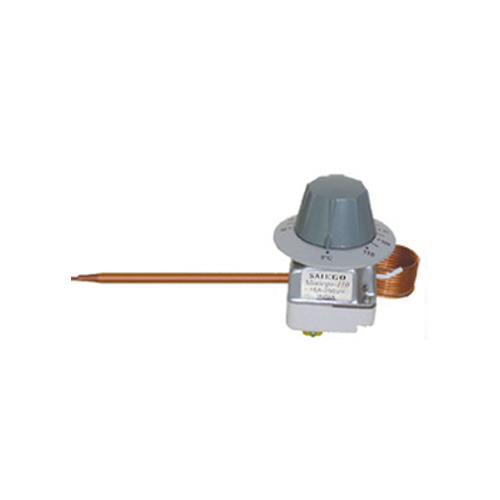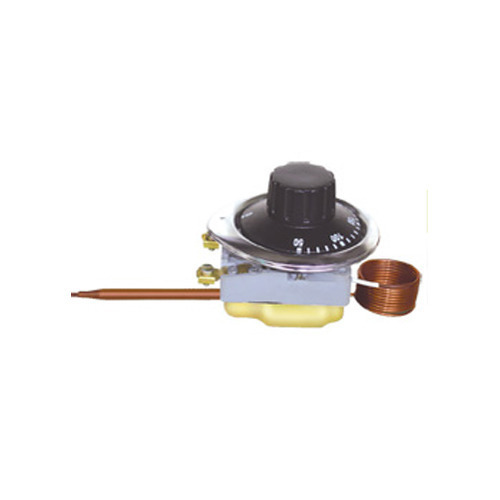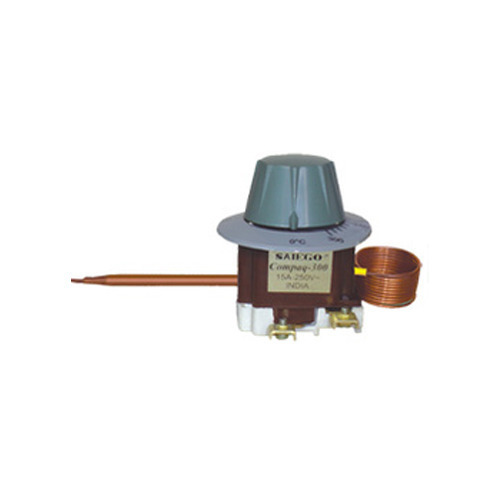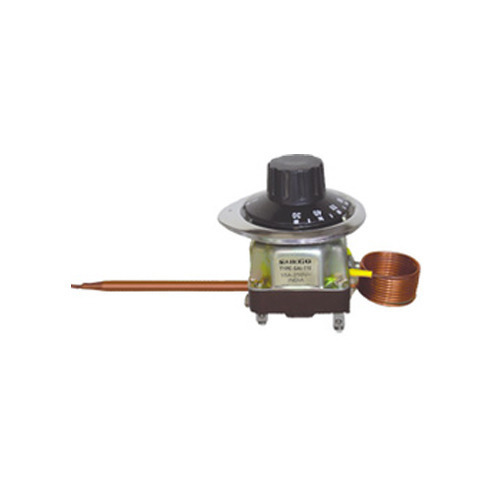Sun Capillary Thermostats
70 INR/Piece
Product Details:
- Length 110 Millimeter (mm)
- Product Type Sun Capillary Thermostats
- Color Grey
- Usage Industrial
- Temperature Range 30-110 Degree C Celsius (oC)
- Click to View more
X
Sun Capillary Thermostats Price And Quantity
- 70 INR/Piece
- 25 Piece
Sun Capillary Thermostats Product Specifications
- Grey
- 30-110 Degree C Celsius (oC)
- Industrial
- Sun Capillary Thermostats
- 110 Millimeter (mm)
Sun Capillary Thermostats Trade Information
- 1 Week
Product Description
Sun Capillary Thermostats are a type of temperature control device that is commonly used in various heating and cooling applications. They are designed to control the temperature of a system by sensing changes in temperature and adjusting the heating or cooling output accordingly.
Sun Capillary Thermostats consist of a sensing element, which is typically a long, thin, flexible capillary tube filled with a temperature-sensitive fluid, such as gas or liquid. The sensing element is connected to a control mechanism, which may be a simple mechanical switch or a more sophisticated electronic control unit.
When the temperature of the system changes, the fluid in the capillary tube expands or contracts, causing the sensing element to move. This movement is transmitted to the control mechanism, which activates or deactivates the heating or cooling source, depending on the temperature change.
Sun Capillary Thermostats are commonly used in heating and cooling systems, such as ovens, refrigerators, air conditioners, and hot water heaters. They are also used in industrial applications, such as in manufacturing processes that require precise temperature control.
The advantages of Sun Capillary Thermostats include their simple design, reliability, and low cost. They are also relatively easy to install and operate, making them a popular choice for both residential and commercial applications. However, they may not be suitable for applications that require high levels of accuracy or rapid temperature changes, as they can be relatively slow to respond to temperature fluctuations.
Tell us about your requirement

Price:
Quantity
Select Unit
- 50
- 100
- 200
- 250
- 500
- 1000+
Additional detail
Mobile number
Email
Other Products in 'Capillary Thermostat' category
 |
GIRISH EGO CONTROLS
All Rights Reserved.(Terms of Use) Developed and Managed by Infocom Network Private Limited. |








 Send Inquiry
Send Inquiry Send SMS
Send SMS